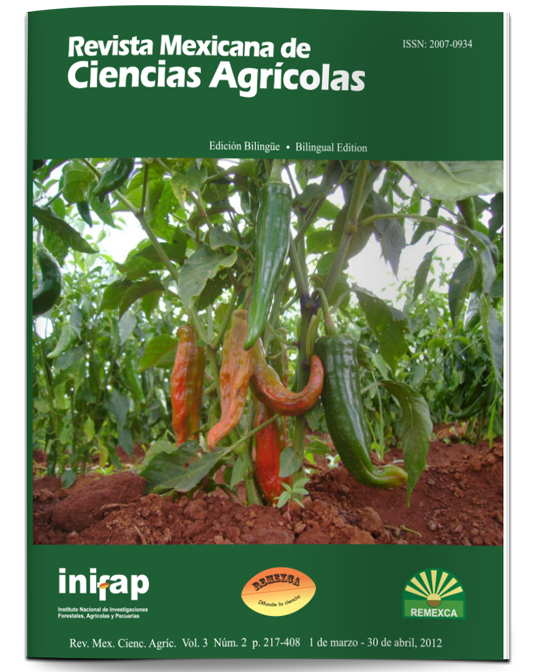Revision of the production, phytochemical composition, and nutraceutical properties of Mexican oregano
DOI:
https://doi.org/10.29312/remexca.v3i2.1467Keywords:
Lippia graveolens, anti-cancer, anti-oxidant, phenolic compoundsAbstract
The oregano plant is distributed worldwide, and represented mainly by two species: Origanum vulgare (Lamiaceace) native of Europa, and Lippia graveolens (Verbenaceae), native of America. Mexico is the second largest producer of oregano in the world, with the species L. graveolens H. B. K. However, most of the species used are wild, and raising them is done in a traditional and limited way. In this study we present an analysis of the dissemination strategies, chemical composition and nutraceutical properties of oregano. Phytochemicals present can be classified into three categories: volatile, lipids and phenolic compounds. These components present diverse neutraceutical properties, the most important of which are antioxidant activities, hypoglycemic, hypotensive, hypolypidemic and anti-carcinogenic. The advances in the study of the phytochemical composition and its relationship with new nutraceutical properties, make oregano a product with a high commercial value and broad chemotherapeutic applications.
Downloads
Downloads
Published
How to Cite
Issue
Section
License
The authors who publish in Revista Mexicana de Ciencias Agrícolas accept the following conditions:
In accordance with copyright laws, Revista Mexicana de Ciencias Agrícolas recognizes and respects the authors’ moral right and ownership of property rights which will be transferred to the journal for dissemination in open access. Invariably, all the authors have to sign a letter of transfer of property rights and of originality of the article to Instituto Nacional de Investigaciones Forestales, Agrícolas y Pecuarias (INIFAP) [National Institute of Forestry, Agricultural and Livestock Research]. The author(s) must pay a fee for the reception of articles before proceeding to editorial review.
All the texts published by Revista Mexicana de Ciencias Agrícolas —with no exception— are distributed under a Creative Commons License Attribution-NonCommercial 4.0 International (CC BY-NC 4.0), which allows third parties to use the publication as long as the work’s authorship and its first publication in this journal are mentioned.
The author(s) can enter into independent and additional contractual agreements for the nonexclusive distribution of the version of the article published in Revista Mexicana de Ciencias Agrícolas (for example include it into an institutional repository or publish it in a book) as long as it is clearly and explicitly indicated that the work was published for the first time in Revista Mexicana de Ciencias Agrícolas.
For all the above, the authors shall send the Letter-transfer of Property Rights for the first publication duly filled in and signed by the author(s). This form must be sent as a PDF file to: revista_atm@yahoo.com.mx; cienciasagricola@inifap.gob.mx; remexca2017@gmail.
This work is licensed under a Creative Commons Attribution-Noncommercial 4.0 International license.



